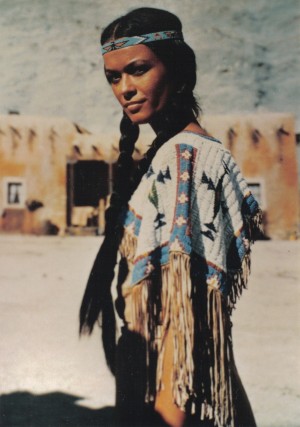

By Megan McKinney
The turn of the century was a pivotal time for the organization known as Fred Harvey. The 1901 death of Mr. Harvey, discussed in the previous segment, did not shift the company’s direction; however his son Ford’s enthusiasm for the Grand Canyon had. Yet an even greater shift was needed.

The astonishingly successful El Tovar on the Grand Canyon’s South Rim.
By the beginning of the century both Southwest tourism and rail travel in general were slipping, thus a new strategy, something active and original, had to be devised. It should stretch beyond the creation of El Tovar and hyping of the Grand Canyon. Ford and his team responded by building on the firm’s unique positioning; Fred Harvey was synonymous with the Southwest and the Southwest was singular in another striking respect.
The area’s geological wonders were stunning but the prevalence of varied Native American tribes offered a human exotica that could be intensified, showcased and made immensely compelling. Hence, an “Indian Department” was developed to arouse consumer interest in the “romance and mystique of the Southwest.” Although today we might find the term abrasive and possibly demeaning, there was little concern about “political correctness” in the use of the word Indian by the Harveys; rather there seemed to be a sense that it conveyed an authentic quality and therefore was used with an attitude of respect for those who carried the name. We do the same
Artists, photographers and ethnographers were commissioned to depict the Southwest’s unique “Indian” lifestyle and culture and the company collaborated with Native American pueblos to further this reach.

A vintage postcard shows the Indian Building in the foreground, with the façade of El Alvarado Hotel to the far right.
When the rambling El Alvarado Hotel was built in Albuquerque in 1902, Fred Harvey and the Santa Fe tucked in the first Harvey Indian Building and Museum next to it, hoping for–but not guessing at–the amazing success it would become, and they continued to do everything to maximize its appeal. The Indian Building not only exhibited Native American arts, crafts and cultures but also its people.

Another vintage postcard shows the Indian Building interior.
During a one-to-two-hour stop, rail travelers were invited to wander through extensive displays of art, and “live exhibits.” Native Americans from tribes around New Mexico – Navajo, Isleta, San Ildefonso and Santa Clara–in traditional dress were often situated working on arts and crafts, such as pottery, weavings, and beading–that were available for sale.
Although the company amassed museum quality goods, consumer taste—particularly in jewelry—was often less sophisticated, so Fred Harvey also developed commercial products for those who preferred items that were more esthetically accessible. These were in a category known as Navajo Lite.

Navajos weaving blankets in the Indian Building.
The marketing of Fred Harvey through the region’s indigenous people expanded as the popularity of automobile and air travel gained on the railroads.

In the 1920’s the company perfected what they termed “Indian Detours” and had them in place at Harvey Hotels from the Grand Canyon to Santa Fe.

A 1929 Cadillac waits at the La Fonda Hotel in Santa Fe for Indian Detour passengers.
Rail travel in the area was enriched through one to three day detours in which travelers would leave the train to spend a few days at a Fred Harvey hotel, from which a large, fine automobile would drive them around the area to “Indian ruin sites and living pueblos.”

Male drivers wearing “western, cowboy-style outfits” and women “couriers” or tour guides, were given concentrated education in the region.

The couriers wore “Navajo-style” attire, “which included velveteen skirts, concha belts, and squash blossom necklaces.”
The Native American marketing was extraordinarily successful and stretched the Fred Harvey reign well beyond its natural term as a railroad extension. Yet, something else had been happening.
Classic Chicago readers who are enjoying our Fred Harvey series will be interested in the 2020 Fred Harvey History Weekend. Here is the link to learn about the annual November event–virtual this year–which is hosted by Fred Harvey authority Stephen Fried. https://www.eventbrite.com/e/fred-harvey-history-weekend-2020-online-6-talks-over-3-days-tickets-123954365845
Megan McKinney’s Classic Chicago Dynasties series on the Fred Harvey family will continue withThe Fred Harvey Men.
Edited by Amanda K. O’Brien
Author Photo by Robert F.Carl







